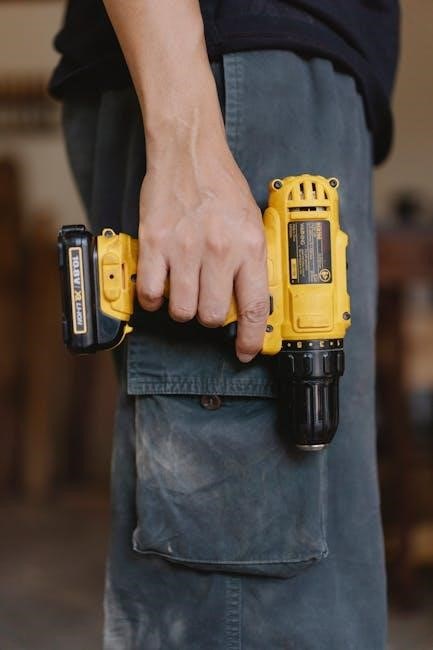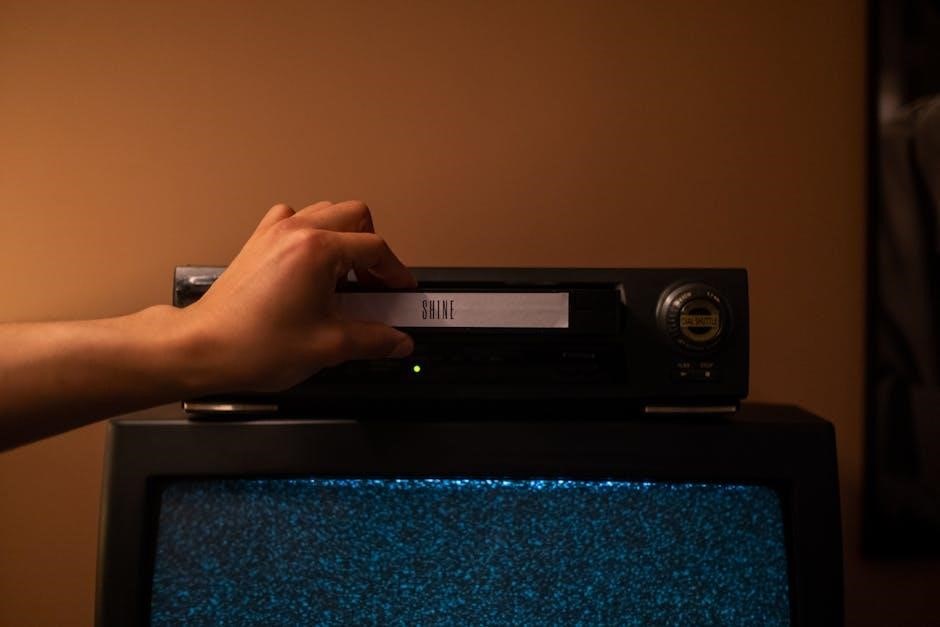Welcome to the KeyFit 30 manual, your essential guide for safe and proper use of the Chicco KeyFit 30 car seat. This manual provides detailed installation, safety, and maintenance instructions to ensure your child’s protection and comfort. Reading this manual carefully is crucial for understanding how to install and use the seat correctly. It covers key features, weight and height limits, and troubleshooting tips to help you make the most of this reliable infant car seat. Follow the instructions closely to guarantee a secure and comfortable experience for your child.

1.1 Overview of the KeyFit 30 Car Seat
The Chicco KeyFit 30 is a highly-rated infant car seat designed for safety and convenience. It accommodates babies from 4 to 30 pounds and up to 30 inches tall, making it suitable for newborns and growing infants. The seat is lightweight and features a sleek design, ensuring easy transport and compatibility with Chicco strollers. Its user-friendly base installation and secure LATCH system provide peace of mind for parents. The KeyFit 30 is known for its superior impact protection and crash testing performance, meeting rigorous safety standards. This car seat is a reliable choice for families seeking comfort, durability, and enhanced safety features for their little ones.
1.2 Importance of Reading the Manual

Reading the KeyFit 30 manual is crucial for ensuring the safety and proper use of the car seat. The manual provides detailed instructions for installation, adjustment, and maintenance, which are essential for protecting your child in the event of a crash. Failure to follow the guidelines can lead to incorrect installation, compromising safety. The manual also outlines weight and height limits, helping you determine when to transition your child to a larger seat. By understanding all features and guidelines, you can maximize the seat’s effectiveness and ensure your child’s well-being. Always refer to the manual for any questions or concerns about the KeyFit 30.

Installation Instructions
Follow the KeyFit 30 manual for proper installation using a seatbelt or LATCH system. Ensure the base is securely fastened and level for optimal safety and performance.
2.1 Base Installation Steps
To install the KeyFit 30 base, begin by placing it on the vehicle seat and ensuring it is level. Use the built-in leveling indicator for accuracy. Tighten the seatbelt or LATCH straps securely, ensuring no slack remains. Check the base’s stability by tugging gently. For seatbelt installation, route the belt through the designated path and fasten it. For LATCH, attach the connectors to the vehicle’s anchors. Ensure the base is tightly secured and cannot move more than 1 inch side-to-side or front-to-back. Refer to your vehicle’s manual for LATCH locations and compatibility. Always verify the base is properly installed before placing your child in the seat.
2.2 Seatbelt vs. LATCH Installation
The KeyFit 30 manual provides guidance for both seatbelt and LATCH installation methods. Seatbelt installation involves routing the vehicle’s seatbelt through the base’s designated paths and securing it tightly. This method is universal and works for vehicles without LATCH anchors. LATCH (Lower Anchors and Tethers for Children) installation uses built-in anchors in the vehicle for a quicker and often easier setup. Both methods ensure a secure fit when performed correctly. Choose the method based on your vehicle’s equipment and preferences. Always follow the manual’s step-by-step instructions for either option to guarantee a safe and proper installation. Verify compatibility with your vehicle’s specifications before proceeding.
2.3 Vehicle Compatibility and Preparation
Ensuring your vehicle is compatible with the KeyFit 30 is crucial for safe installation. Always check your vehicle’s owner’s manual to confirm the presence of LATCH anchors or seatbelt compatibility. Most vehicles manufactured after 2002 are equipped with LATCH anchors, but it’s essential to verify their locations and ensure they are accessible. For vehicles without LATCH, seatbelt installation is a reliable alternative. Before installation, prepare your vehicle by adjusting the seat to an upright position and ensuring the seatbelt or LATCH anchors are easily accessible. Proper preparation ensures a secure fit for the KeyFit 30 base, which is vital for your child’s safety. Follow the manual’s guidelines to confirm compatibility and prepare your vehicle correctly.

Safety Features and Guidelines

The KeyFit 30 offers superior impact protection and meets rigorous crash testing standards, ensuring your child’s safety. Always follow guidelines for proper use and maintenance.
3.1 Key Safety Features of the KeyFit 30
The KeyFit 30 is designed with advanced safety features to protect your child. It includes a sturdy shell, energy-absorbing foam, and a secure harness system. The seat is built to absorb and distribute crash forces, minimizing impact on your baby. It also features a rebound bar for added stability and a one-pull harness adjustment for a snug fit. Additionally, the seat meets rigorous safety standards, ensuring reliability in various crash scenarios. These features work together to provide maximum protection and peace of mind for parents. Regular updates and adherence to safety guidelines further enhance its reliability.
3;2 Proper Harness Adjustment
Proper harness adjustment is critical for your child’s safety. Start by loosening the harness straps and placing your baby in the seat. Ensure the harness is snug, with no slack, and the chest clip is at armpit level. Tighten the straps evenly, checking that the harness passes the “pinch test”—you should not be able to pinch any excess material. The one-pull harness adjustment allows for easy tightening. Always verify that the harness is correctly positioned and secure after each use. Regularly check for proper fit as your child grows, ensuring the harness remains adjusted to provide optimal protection in case of sudden stops or impacts.
3.3 Impact Protection and Crash Testing
The KeyFit 30 is designed with advanced impact protection features, ensuring optimal safety in the event of a crash. It meets rigorous ECE R44/04 safety standards and undergoes extensive crash testing, including front, side, and rear impacts. The seat features a rigid shell, energy-absorbing foam, and a reinforced seat shell to distribute and reduce forces. The SuperCinch force-multiplying LATCH tightener enhances installation stability. Additionally, the EPS foam provides superior side impact protection. Regular crash testing ensures the seat performs exceptionally in various scenarios, providing peace of mind for parents. Always follow manual guidelines to maintain the seat’s protective capabilities and ensure your child’s safety on the road.

Usage and Maintenance
Proper usage and regular maintenance ensure the KeyFit 30 functions safely and effectively. Always follow care instructions, clean with mild detergent, and store correctly when not in use.
4.1 Weight and Height Limits

The KeyFit 30 is designed for infants from 4 to 30 pounds (1.8 to 13.6 kg) and up to 30 inches (76 cm) in height. Always ensure your child is within these limits for safe use. The seat is intended for rear-facing installation only, providing optimal protection for infants. As your child grows, monitor their weight and height closely to avoid exceeding the maximum limits. Exceeding these limits could compromise safety. Regularly check the manual for specific guidelines and transition to a larger seat when necessary. Proper adherence to these limits ensures your child’s safety and comfort while using the KeyFit 30 car seat.
4.2 Cleaning and Care Instructions
Regular cleaning and proper care are essential for maintaining the KeyFit 30’s quality and safety. Use mild detergent and lukewarm water to clean the seat. Ensure all buckles are securely fastened before washing to prevent damage. The seat pad can be hand-washed or machine-washed on a gentle cycle, while the harness and buckle should be wiped clean with a damp cloth. Avoid using harsh chemicals or abrasive materials that could damage the materials. Allow all parts to air-dry thoroughly before reassembling. For tough stains, spot clean with a soft-bristled brush. Always refer to the manual for specific cleaning instructions to ensure the seat remains safe and functional for your child.
4.3 Storage and Transportation Tips
Proper storage and transportation of the KeyFit 30 are crucial to maintain its safety and functionality. When not in use, store the seat in a cool, dry place, away from direct sunlight and moisture. Avoid exposing it to extreme temperatures, as this may damage the materials. For transportation, ensure the seat is securely fastened in the vehicle to prevent movement. If storing for an extended period, consider placing it in its original packaging or a sturdy box to protect it from dust and potential damage. Always check for any recalls or updates before storing or transporting the seat. Follow these tips to ensure the KeyFit 30 remains in optimal condition for your child’s safety.

Troubleshooting and Common Issues
Troubleshooting the KeyFit 30 involves addressing installation problems, harness malfunctions, and buckle issues. Refer to the manual for solutions to ensure your child’s safety and proper seat function.
5.1 Resolving Installation Problems
Common installation issues with the KeyFit 30 often relate to base alignment or seatbelt/LATCH connectivity. Ensure the base is level using the built-in indicator and securely fastened. Verify the seatbelt or LATCH straps are tightly buckled without twists. If the base moves excessively, check the vehicle’s manual for approved LATCH locations or seatbelt routing. Consult the troubleshooting section for guidance on resolving these issues. If problems persist, contact Chicco customer support for assistance. Proper installation is critical for your child’s safety, so take the time to ensure all steps are followed correctly.

5.2 Addressing Harness or Buckle Malfunctions
If the harness or buckle malfunctions, first ensure all straps and buckles are clean and free from debris. Regularly inspect for wear or damage. For stuck buckles, gently clean with a soft cloth and mild detergent. If the harness is too loose or tight, adjust it according to the manual’s guidelines. Ensure the harness is properly threaded through the seat and securely fastened. If issues persist, contact Chicco customer support for assistance or replacement parts. Properly functioning harness and buckles are critical for your child’s safety, so address any malfunctions promptly to maintain optimal protection.
The KeyFit 30 manual is a comprehensive guide designed to ensure the safe and proper use of your Chicco KeyFit 30 car seat. By following the installation, safety, and maintenance instructions outlined in this manual, you can provide your child with a secure and comfortable travel experience. Always refer back to this guide for any questions or concerns, as your child’s safety depends on correct usage. Remember to stay informed about updates and best practices for car seat safety. With proper care and adherence to the guidelines, the KeyFit 30 will serve as a reliable and trustworthy car seat for your child’s early years.



